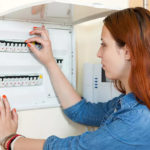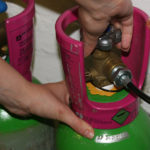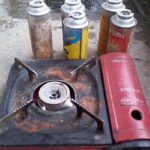For more information, please see:
Enhance Safety by Purchasing and Utilizing a Reliable Gas Stove
– Gas stoves with identifiable brand names and clear product information are always safer options compared to gas stoves with uncertain origins, including imported products.
– Ensure safety by purchasing a gas stove with a safety certification.
– Avoid wearing clothes made of flammable materials near the gas stove, refrain from blowing directly into the stove, and keep flammable objects such as paper, fabric, alcohol, and gasoline away from the stove to prevent explosions.
– The three-legged frame on the gas stove burner serves the purpose of creating space between the stove and the cooking utensils. This ensures that the gas is not clogged or compressed, thus preventing gas explosions. Therefore, it is crucial to clean the gas stove grate regularly and avoid leaving leftover food behind to prevent fires.
– To prevent the accumulation of solid objects and dust in the channels and vents and to prevent rusting, it is recommended to clean the gas stove on a regular basis.
Choose Gas Cylinders with a Clearly Identified Origin
– Avoid using old, rusty gas cylinders with undefined origins.
– Properly install the gas cylinder valve and gas hose. It is advisable to replace the hose after approximately one year of use. After using the stove, remember to close the gas valve to ensure safety.
– Always position the gas cylinder below the level of the stove. The cylinder must not be inclined, tilted, or lying down.
Potential Situations When Using a Gas Stove and their Swift Solutions
– If a gas odor is detected when the stove is turned on: there may be a gas leakage. In this case, close the gas cylinder valve, turn off the stove, and ventilate the kitchen to disperse the gas. Do not use any electronic devices or lighters in the vicinity.
– If there is a spark but no flame: the gas cylinder may not be open or may be empty, or there may be an issue with the gas hose or some other component. If a faulty component is suspected, it is essential to seek professional assistance for inspection or gas cylinder replacement.
– If the stove doesn’t ignite and there is no spark: it could be due to a depleted igniter battery or damaged electric wiring and IC. In the case of a dead battery, a replacement can be purchased. However, for problems related to electric wiring or IC, it is recommended to consult a professional for assistance.



































